Sagada, Philippines: Not Your Usual Tourist Destination
When traveling to the Philippines, one lesser-known but worthwhile destination to visit is Sagada. The well-preserved culture mixed with outdoor adventure offers something for everyone. Located 171 miles from Manila, the Philippines’ capital city, Sagada is nestled in a valley at the upper end of the Malitep tributary of the Chico River, between the main Cordillera ranges and the Ilocos Region. With its preserved nature, it is often described as a hidden paradise in modern times.
How to reach the place?
Travelers can arrive to Sagada via public transportation or private car. If you want convenience, taking a private car or hiring a driver is better because you can relax and take in the scenery at your own pace. With regard to public transport, there is no airport near Sagada, so taking a bus or public van is the only way. Travel time from Manila to Sagada is roughly 12 hours. If taking public transport, the first six hours will get you to Baguio City, while the second part of the journey will take you along the Halsema Highway. Here you’ll be offered striking views almost all of the way to Sagada, as the road passes over a mountain range reaching 7,000ft.
When traveling with a private car, you may also take the alternative route of Dalton Pass, which will not go through Baguio City. If choosing this route, the road trip will already be an adventure due to the precarious and mountainous stretch of road that separates Nueva Ecija and Nueva Vizcaya. After passing through Dalton Pass, Bontoc town comes next. Just follow the same route as if coming from Baguio. Travel time is still about 12 hours from Manila to Sagada.
If you are coming from Manila to Baguio into Sagada by bus, they are available every half hour. In Manila, the closest Victory Liner bus terminal is at Pasay City. The regular bus is P450 (about $11), and deluxe is P700 (about $17). From the Victory Liner terminal in Baguio, catch a taxi to the GL Liner terminal. Taxi fare is about P70 (less than $2). The first GL liner bus leaves at 6:15 AM, and the last at 1:00 PM.
Upon arriving in Bontoc to Sagada, you can take a jeepney located on the side streets of the main road. The first jeep leaves at 8:30 AM, and the last around 5:00 PM. It leaves when it is full. The trip usually takes about 30 to 45 minutes.
Why Choose Sagada?
Upon reaching Sagada, your spirit will be lifted by the natural wonders around you. Ear deafening silence will help you realize how far you are from the bustling cities of the Philippines. You will hear the flow of waters from hidden streams, the rustling of leaves, the endless chirping of birds and the buzzing of insects. The smell of garbage and smoke will be replaced by the sweet scent of flowers. The pines blanketing the surrounding mountains provide a dramatic setting for this unique community.
Sagada is a tiny town, with a small population but rich culture. In fact, locals here are still partaking in the same traditions their ancestors did.
Sagada is not the usual tourist destination where cars, buses and big shopping malls are found. It is a place far away from urban life. Here, you will only find small inns, handicraft shops and outdoor adventure. It is quite amazing how people here are able to resist the urbanization process, as they truly love what they have. The richness we know may not be a fitting description of the people living here, but in their own way they are rich by placing importance on their heritage and health.
 Traditions
Aside from the steep area featuring majestic waterfalls, rice terraces and exciting trekking locations, Sagada is also famous for its hanging coffins. Hanged coffins made Sagada really famous to the world. It is a unique burial ritual practiced by the native inhabitants that hang coffins at the sheer faces of the mountains’ cliffs. This practice is a product of ancient traditions that are similar to the pyramids and mummies of Egypt. It has been practiced by the natives for centuries, and some of the coffins have been hanging on the cliffs for more than 200 years. The practice is still done by some today.
Before the burial, the corpse undergoes a mummification process, involving smoking the body throughout the 5-day pre-burial feast. This is done to prevent scavengers from disturbing the coffins when they are placed on the cliff. The corpse does not undergo embalming, as part of the tradition and belief is the body should be complete as the soul goes to the other world.
A person nearing death may request his coffin be hanged off the cliff, and the family ensures it will be as high as possible from the ground so no wild animals can damage or destroy the coffin. Another belief is the higher the coffin, the more easily the soul can get to heaven.
Another unique burial ritual in Sagada is the allocation of separate cemeteries for each cause of death. For example, if a mother died from giving birth, she will be buried or hung in one place for mothers who died from such a cause. If a person died due to old age, there is a separate burial site for them, as well as for those who died due to accident or sickness. Of all burial sites, the place for sickness has the least number of burials, as locals live a healthy, simple and pure lifestyle and rarely become ill.
Things To Do
Travelers should include sites like the Burial Cave, Sumaguing Cave, Marlboro Country, the Echo Valley and Ganduyan Museum in their itinerary. The Burial Cave is open to all visitors, but given the very steep way going down, it is important to be in shape. This is a sacred place, so one must always remember to be respectful. Visitors are not allowed to touch and open the coffins, in order to pay respect to the dead.
Sumaguing Cave, also known as “the big cave,” is a unique adventure that makes it easy for visitors to get lost. There are almost 60 known caves underneath Sagada. Deep down in Sumaguing cave, you can find perfect formations of stalactites and stalagmites that took thousands of years to shape. Many are also amazed by the limestone rock formations underneath Sagada. When visiting, it is best to hire a tour guide to give you information and answer any questions you may have.
From the caves, you can check out nearby waterfalls, and travelers are allowed to swim to the 12-foot-deep pool at the base. The water current is even safe for children. You can also go hiking and mountain climbing in Sagada by visiting the Echo Valley, Mount Ampacao and Kiltepan, which provide amazing views of the region.
Traditions
Aside from the steep area featuring majestic waterfalls, rice terraces and exciting trekking locations, Sagada is also famous for its hanging coffins. Hanged coffins made Sagada really famous to the world. It is a unique burial ritual practiced by the native inhabitants that hang coffins at the sheer faces of the mountains’ cliffs. This practice is a product of ancient traditions that are similar to the pyramids and mummies of Egypt. It has been practiced by the natives for centuries, and some of the coffins have been hanging on the cliffs for more than 200 years. The practice is still done by some today.
Before the burial, the corpse undergoes a mummification process, involving smoking the body throughout the 5-day pre-burial feast. This is done to prevent scavengers from disturbing the coffins when they are placed on the cliff. The corpse does not undergo embalming, as part of the tradition and belief is the body should be complete as the soul goes to the other world.
A person nearing death may request his coffin be hanged off the cliff, and the family ensures it will be as high as possible from the ground so no wild animals can damage or destroy the coffin. Another belief is the higher the coffin, the more easily the soul can get to heaven.
Another unique burial ritual in Sagada is the allocation of separate cemeteries for each cause of death. For example, if a mother died from giving birth, she will be buried or hung in one place for mothers who died from such a cause. If a person died due to old age, there is a separate burial site for them, as well as for those who died due to accident or sickness. Of all burial sites, the place for sickness has the least number of burials, as locals live a healthy, simple and pure lifestyle and rarely become ill.
Things To Do
Travelers should include sites like the Burial Cave, Sumaguing Cave, Marlboro Country, the Echo Valley and Ganduyan Museum in their itinerary. The Burial Cave is open to all visitors, but given the very steep way going down, it is important to be in shape. This is a sacred place, so one must always remember to be respectful. Visitors are not allowed to touch and open the coffins, in order to pay respect to the dead.
Sumaguing Cave, also known as “the big cave,” is a unique adventure that makes it easy for visitors to get lost. There are almost 60 known caves underneath Sagada. Deep down in Sumaguing cave, you can find perfect formations of stalactites and stalagmites that took thousands of years to shape. Many are also amazed by the limestone rock formations underneath Sagada. When visiting, it is best to hire a tour guide to give you information and answer any questions you may have.
From the caves, you can check out nearby waterfalls, and travelers are allowed to swim to the 12-foot-deep pool at the base. The water current is even safe for children. You can also go hiking and mountain climbing in Sagada by visiting the Echo Valley, Mount Ampacao and Kiltepan, which provide amazing views of the region.
 Typical foods
Sagada is often considered a food haven by those who visit. Ingredients are found in the local market only. In fact, locals do not consume foods that come from outside Sagada.
Sagada is famous for its native pinikpikan, an unusual smoked chicken dish (pictured above). The feathers are removed by burning the chicken, and then the meat is beaten off to make it tender. Each order includes one whole chicken, so pre-ordering must be done, which is usually three hours before meal time. Pinikpikan is traditionally served with salad on top.
Another famous food in Sagada is etag, locally processed salty pork. Etag is prepared by soaking the meat into a salt mixture for three days. It is then hung in an open air room, to allow the juices drip, which takes about one day. Once it dry, it will be smoked in a special room for five days. Since etag is salty in taste, it is usually served with a soup or pinikpikan.
Yoghurt House is just a short walk down the hill. Yoghurt dishes are a specialty, served with fruits or used as a salad dressing. Yoghurt is flavored with real fruits taken from local farms in the Sagada town. Pastas and veggie meals are also available.
Near Yoghurt House is the famous Bana’s Café, the only coffee house that serves alamid coffee. This kind of coffee is unique because the coffee beans are collected from the feces of alamid, or wild cats. Locals believe this makes the coffee more tasty, aromatic and delicious.
For groups, Log Cabin Buffet can be a good restaurant choice. For about $8, you can enjoy buffet dishes prepared by a French chef. To experience a more local taste, choose Cuisine Igorota, where you can taste typical Igorot foods at a very affordable price. Igorot is the tribe native in Sagada.
Where to stay?
There are an array of excellent accommodation options in Sagada. Sagada Home Stay is located near the bus stop in the center of town. One bedroom with a personal bathroom costs about $17 per night, and the five other rooms having shared bathrooms are about $6 per night. Wi-Fi costs less than $1 per day, and there are computer rentals for about $0.95 per hour. A separate cottage can be rented for about $36 per night. It has two bedrooms, a bathroom and kitchen and can accommodate up to four people.
George Guest House (pictured above) is considered the most vibrant building in town. The interiors are decorated and painted attractively, giving it a cozy feeling. All bedrooms have private bathrooms and hot showers. Rooms having a double-bed with television costs about $14 per night, and without a television is about $12. For a single room it costs about $7 per night.
Traveler’s Inn is the answer if you are looking for a low-cost guest house. There are 14 rooms on two floors with three private bathrooms. All rooms featuring shared bathrooms cost about $5 per person, and those with private bathrooms are about $6 per person. The rooms sharing bathrooms have a discounted price of about $4 if you stay more than three days, and about $3.50 per night if you stay a week or more.
When choosing accommodation, make sure the bathroom has a hot shower, as it is very cold in Sagada.
This post was written by Kristine Madriaga, Jessie on a Journey’s local Philippines writer.
Typical foods
Sagada is often considered a food haven by those who visit. Ingredients are found in the local market only. In fact, locals do not consume foods that come from outside Sagada.
Sagada is famous for its native pinikpikan, an unusual smoked chicken dish (pictured above). The feathers are removed by burning the chicken, and then the meat is beaten off to make it tender. Each order includes one whole chicken, so pre-ordering must be done, which is usually three hours before meal time. Pinikpikan is traditionally served with salad on top.
Another famous food in Sagada is etag, locally processed salty pork. Etag is prepared by soaking the meat into a salt mixture for three days. It is then hung in an open air room, to allow the juices drip, which takes about one day. Once it dry, it will be smoked in a special room for five days. Since etag is salty in taste, it is usually served with a soup or pinikpikan.
Yoghurt House is just a short walk down the hill. Yoghurt dishes are a specialty, served with fruits or used as a salad dressing. Yoghurt is flavored with real fruits taken from local farms in the Sagada town. Pastas and veggie meals are also available.
Near Yoghurt House is the famous Bana’s Café, the only coffee house that serves alamid coffee. This kind of coffee is unique because the coffee beans are collected from the feces of alamid, or wild cats. Locals believe this makes the coffee more tasty, aromatic and delicious.
For groups, Log Cabin Buffet can be a good restaurant choice. For about $8, you can enjoy buffet dishes prepared by a French chef. To experience a more local taste, choose Cuisine Igorota, where you can taste typical Igorot foods at a very affordable price. Igorot is the tribe native in Sagada.
Where to stay?
There are an array of excellent accommodation options in Sagada. Sagada Home Stay is located near the bus stop in the center of town. One bedroom with a personal bathroom costs about $17 per night, and the five other rooms having shared bathrooms are about $6 per night. Wi-Fi costs less than $1 per day, and there are computer rentals for about $0.95 per hour. A separate cottage can be rented for about $36 per night. It has two bedrooms, a bathroom and kitchen and can accommodate up to four people.
George Guest House (pictured above) is considered the most vibrant building in town. The interiors are decorated and painted attractively, giving it a cozy feeling. All bedrooms have private bathrooms and hot showers. Rooms having a double-bed with television costs about $14 per night, and without a television is about $12. For a single room it costs about $7 per night.
Traveler’s Inn is the answer if you are looking for a low-cost guest house. There are 14 rooms on two floors with three private bathrooms. All rooms featuring shared bathrooms cost about $5 per person, and those with private bathrooms are about $6 per person. The rooms sharing bathrooms have a discounted price of about $4 if you stay more than three days, and about $3.50 per night if you stay a week or more.
When choosing accommodation, make sure the bathroom has a hot shower, as it is very cold in Sagada.
This post was written by Kristine Madriaga, Jessie on a Journey’s local Philippines writer.
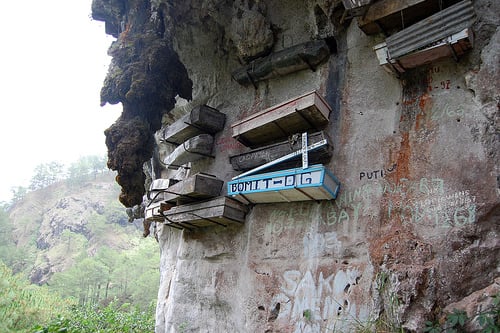
Image via dahon
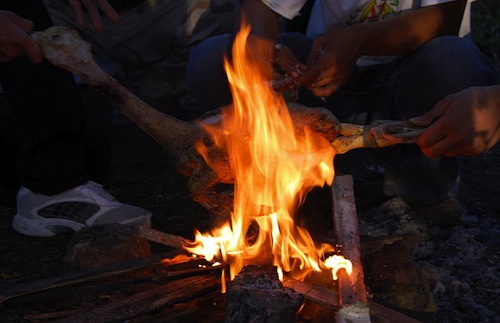
Image via Shubert Ciencia

Hi, I’m Jessie on a journey!
I'm a conscious solo traveler on a mission to take you beyond the guidebook to inspire you to live your best life through travel. Come join me!

Want to live your best life through travel?
Subscribe for FREE access to my library of fun blogging worksheets and learn how to get paid to travel more!

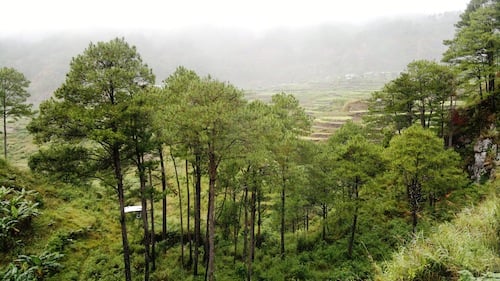

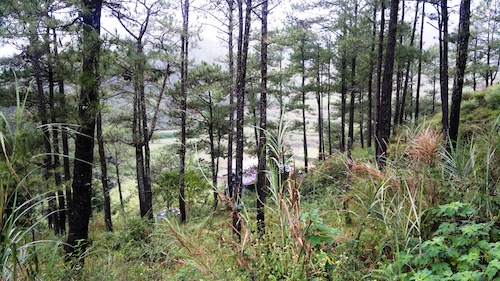
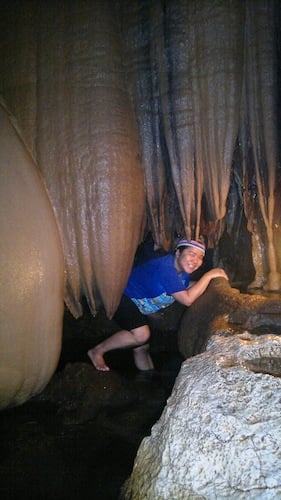
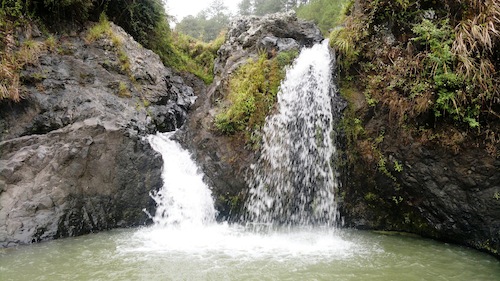
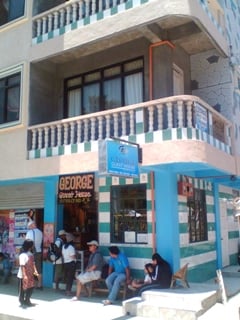

Great adventure! 🙂 Thanks for the heads up. You really help me narrowing down my choices of mountaineering activities this coming summer.